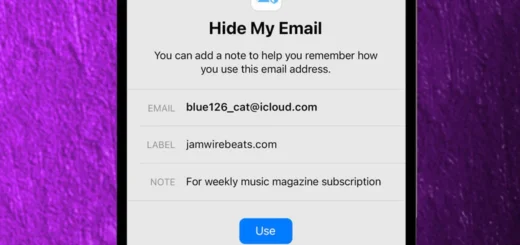How to Create a Trading Platform
For more efficient trading, brokers, traders, and other active participants in the stock markets use terminals – software solutions for analyzing markets, using trading advisors, and executing commercial transactions.
Such solutions are very easy to use and allow you to make decisions quickly, so traders can increase the profit from investments in certain products.
In this article, we will consider the features of such financial solutions and how to create a trading platform.
What Are The Features Of Trading Applications?
Technologies are designed to make life easier for a modern person in all aspects of his activity. And smart people do not try to go against this trend but use it to increase business efficiency. Let’s figure out the main features of trading applications.
- Registration
The process of registering an account and verifying the user’s identity cannot be complicated and unsafe, as it involves the use of money and financial data. It’s a good idea to give the user several different registrations and login options to choose from, such as via email, phone number, or social networks. In addition, the platform may support technologies such as Face ID and/or Touch ID.
- Control panel
The user profile must be available for making changes throughout the entire period of using the system. It is recommended to allow users to update almost all data: phone number, first and last name, bank account number, and address. In this case, the statistics should remain unchanged.
- Marketplace
The platform must include tools for placing orders to buy/sell shares. Users should be able to edit settings, for example, trading algorithms, which will allow them to quickly respond to changes and increase profits. This section is key for trading platforms, so you should pay special attention to it.
For example, a local accident in a battery factory can lead to a fall in the shares of the owner of the business and an increase in the shares of battery factories in other areas.
- Payments and transactions
The functionality of each trading platform should include the ability to replenish deposits, carry out trading operations, and withdraw funds. Data security is a very important part of this.
- Quote monitoring
This screen should be informative, understandable, and available 24/7. It should also add customization tools and the ability to take notes.
- Guides, interactive tips
No matter how hard the UX/UI developers try, a good trading platform cannot be made “understandable” at a glance. Therefore, it is important to take care of training and tips in advance that will make it easier to get to know the platform.
- Portfolio
For investors and traders, an important option is to track asset quotes in real-time. In addition, users need specific settings for information analysis. The introduction of such functions will allow market participants to make the right decisions regarding the purchase or sale of assets.
- Deposits
The user should be able to check the balance by pressing one button. A good solution would be to implement access to such a button in all sections of the platform. This is a very important usability element, without which it is impossible to develop a successful trading platform.
- Analytics
The activity of participants in the stock market does not make sense without the ability to track market statistics and analyze the effectiveness of transactions. Charts will be a great solution for analyzing the state of the market, charts – for evaluating the effectiveness of trading strategies.
- Demo account
Simplify the user engagement process as they will be able to experience the platform without risking real money.
It’s also important to implement push notifications as this is a great solution to get user feedback. A search engine is another useful option for traders to make trading more convenient and profitable.
- Design
Trading is a risky activity where one thoughtless move can lead to a loss of money. For this reason, the design of the trading platform should be as convenient as possible and warn traders against erroneous clicks. Therefore, when developing interfaces, you need to pay attention to the following factors:
UI / UX development should start at the stage of idea formation and solution requirements. Otherwise, developers will try to fit UI / UX to an already finished product.
Usability testing should be carried out at the completion of each stage of the design, including each platform screen and interface element.
Studying user requests and actions will facilitate the process of platform development.
How to create a good solution for traders
The development of software and algorithms for trading in the stock market is a complex and quite expensive process. Even if everything is done qualitatively, it is not a fact that the created platform will become popular. Pay attention to the following points in order to avoid mistakes while developing a platform.
A website and a mobile app
If your plans are limited to developing only a desktop app, a mobile version is not required. However, most successful brokerage companies have the option of trading via smartphones and tablets, as this increases their profits and insures against issues associated with malfunctions of the desktop application.
Selecting supported operating systems
The desire of potential users to take advantage of the platform depends on the choice of supported operating systems. And here a simple rule applies: the more of them, the better. However, you should know that integrating support for each operating system requires additional costs and that different operating systems have various audience sizes.
Development Process
This process is usually divided into several stages:
- Mobile development. You will need the skills of app developers for Android and iOS devices (devices on Windows Mobile can be neglected). Android experts should be familiar with C# or Kotlin programming languages, while iOS specialists should have knowledge about Java or Swift, etc.
- Backend development. To create a trading platform, you also need back-end specialists who will deal with server technologies: architecture, databases, and so on. At this stage, the functions of logging into the system, conducting transactions, alerting, and so on will be created.
- Frontend development. This concept means the creation of a platform design and a web interface, that is, a “client” part – everything that a user interacts with.
Trading Algorithms
This concept involves computer algorithms that independently “decide” when and how to execute purchase/sale operations.
Safety
The security of financial data is a serious problem for the Internet community. The specialist usually solve this problem in two ways:
- Refusing to own money and payment data of users, transferring this “privilege” to third-party resources, for example, banks. This approach can be used, but it adds complexity to the platform and increases the cost of financial operations.
- By providing improved security measures for user authentication and authorization. However, as a result, usability suffers.
Conclusion
Now you know all the points to consider when developing a trading platform. It remains to find experienced developers to create a profitable solution. Inoxoft is a good choice if you want to develop a profitable trading platform to work with currency exchanges, stock indexes, stock market, and commodities markets.


